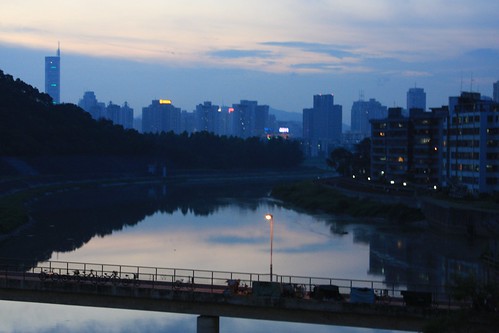LO WU BORDER — When I started my China journey several weeks ago, I wrote about the travels of Jorgen Bisch, the Dutch journalist who scored a coveted trip to China in 1964. At a time when China was still closed to most Westerners, Bisch's six-week tour took him to Beijing, Shanghai, Nanjing, Xi'an, and Guangzhou. And at the end of his highly-controlled tour of Mao Zedong's China, Bisch left the country by crossing the Shenzhen River into Hong Kong, then a British colony, via an old wooden bridge.
"[My Chinese tour guides] accompanied me on the three-hour train ride to the Hong Kong border, the last leg of our long six-week odyssey," Bisch wrote in the November 1964 issue of the National Geographic. "At the bridge separating China from the British Crown Colony, they insisted on carrying my baggage to the middle of the span—as far as they were permitted to go."
These days, the train ride from Guangzhou to the Hong Kong border takes about one hour. Commuters may simply walk up to the ticket counter at the Guangzhou East Railway Station and purchase seats for Hong Kong-bound high-speed trains. Anyone can take this journey, even journalists—there are no handlers or official “tour guides” anymore.
Thus 44 years after Bisch’s journey, I find myself leaving China on the same route. Instead of the train, however, I decided to take a bus to the border, which took me about two hours. I wanted to get a different view of southern China, away from the rail line, and most of what I saw consisted of high-rises, factories, farmlands, suspension bridges, and vacation homes and resorts frequented by well-to-do Hong Kong residents.
Still, the buses and the trains all end their journeys at the same spot—the Lo Wu Border Crossing point where Bisch crossed that wooden bridge. During the post-World War II days, the bridge symbolized Cold War political tension: at the time, British Hong Kong had no direct rail service to China, so passengers with valid traveling documents were required to get off at the border and walk into China, or vice versa.
 In this regard, things have not changed much. Today, at the Lo Wu crossing, passengers are still required to disembark, go through Chinese immigration, and walk across the Shenzhen River—though now via an air-conditioned bridge with floor-to-ceiling windows—before finally arriving at the Hong Kong immigration check point. Hong Kong residents may simply scan their identification cards at the immigration desk; but for me, an American, an official Hong Kong immigration stamp is required.
In this regard, things have not changed much. Today, at the Lo Wu crossing, passengers are still required to disembark, go through Chinese immigration, and walk across the Shenzhen River—though now via an air-conditioned bridge with floor-to-ceiling windows—before finally arriving at the Hong Kong immigration check point. Hong Kong residents may simply scan their identification cards at the immigration desk; but for me, an American, an official Hong Kong immigration stamp is required.So when the Chinese immigration officer stamped “exit” on my passport, followed by the “entry stamp” on the Hong Kong side, I had officially left mainland China and entered into the Special Administrative Region of Hong Kong. When London returned this city to Beijing 11 years ago, the deal was to allow Hong Kong to govern itself—except in matters involving defense and foreign relations—for 50 years. The two leaders who signed the deal, Margaret Thatcher of Britain and Deng Xiaoping of China, thought that the 50-year “phasing-in” time frame was the best political solution to a historical problem, the best way for Hong Kong to adjust after 155 years of colonial rule; hence the separate immigration system.
In my next and final entry for “China: Behind the Scenes,” I will tell a story about Hong Kong’s old Kai Tak International Airport, a place where, during the most tense political times in the final decades of the 20th century, many Hong Kong residents left to settle in the West—a great number of them actually ended up in California. The stories behind these Hong Kongers’ decisions to leave, and in many cases their subsequent returns, will shed some light on the politics, history, and culture of this former British colony.




No comments:
Post a Comment